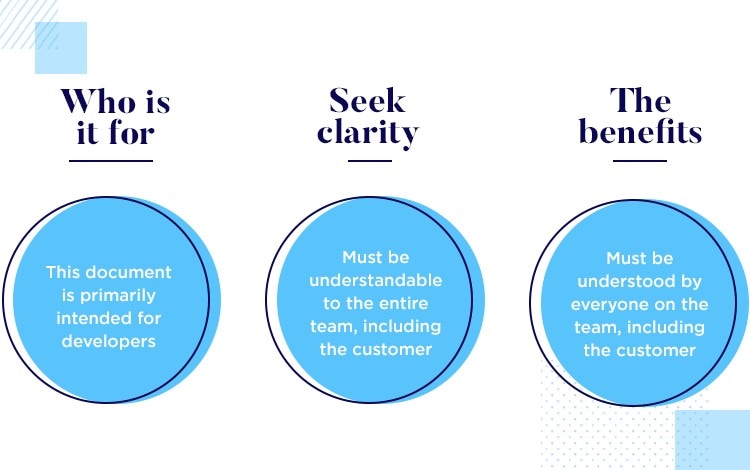Functional Specifications in UX Discipline

Have you ever wondered what the most important key to designing software is? The layout defines the purpose, content, coding, result expectations, and various other aspects of developing the software. Defining a blueprint and listing down all the in-depth requirements is linked to functional specifications.
The main purpose of the specifications design is to define the requirements to be implemented by the software solution. To fulfill the customer's requirement in the most precise manner, it is crucial to first create the functional specification document that will guide designing better and efficient software.
What is Functional Specifications? - A Brief Introduction.
The functional specifications are the blueprint that helps to smoothen the process of the implementation and designing of the software. It defines all the project requirements in detail to help the developer design one that suits all the prospective customers' needs.
To help the developer know what exactly has to be designed and specifications required, the functional specification document is used to explain everything in the brief manner. The details that are listed in the functional requirements specification document are:
- Introduction
It includes the basic details of the software like the name, the expected aim, final outcome, target audience, and overall reach expectations regarding the expected customer experience and base.
- Project Scope
It involves all the goals, deliverables, features, tasks, costs, and deadlines of the project. The project scope is necessary to define the outline, which helps the developer know all the basic details to be included and the broad cost that is based on the potential.
- Order
The phase-wise description of the work needs to be defined in this particular segment. The objectives based on the development stages are defined in this phase that helps the developer identify the project's workflow.
- Risks and Assumptions
The section that is often neglected but is very important is the risks and assumptions. The considerations linked to the functional aspect and the factors that impact the project's design are included in this section.
- Use Cases
The user perspective is important to define while the blueprint to design the application is developed. It includes all the important functional points from the user's point of view that make the application crucial and valuable.
- Requirements
The most important is to define the overall utility of the product. This section describes what the application is expected to do and all the critical features that make it stand apart from the others.
- Teams and interfaces
An application, when developed, requires various people to participate and work cordially. The team and interfaces section of the functional specification document relates to all the people involved in the project and the interfaces or the input to be used.
- Configuration
Configuration refers to all the steps that are to be undertaken to configure the product. It involves all the steps that the user needs to follow in order to make the application work and perform effectively. It also defines the preconditions that need to be fulfilled at the user end.
- Non-functional Requirements
Not every feature that one might desire to include needs to be a functional feature. This is the section that includes all the list of product features that can be included as additional features. It defines the themes and various other attributes that act as enhancements to the platform or application.
- Error Reporting
Errors and exceptions are an inclusive part of every application. It means that there are chances of some messages that one can display and options presented to the user. The same should offer the solution and the manner to handle the error that occurred.
A document that defines every single step from the name of the project to the descriptions like preconditions, theme, basic flow, alternate flow, exception flow, error handling, and post conditions, the functional specifications is one complete offering.
An Example of Everyday Functional Specifications.
The functional specifications are used in a wide variety of applications. The functional requirements need to be clearly specified in every application that needs to be developed. Even while starting a business, the developer or the starter needs to specify the requirements clearly.
The functional requirements specification are used in a list of examples like
- Business Rules
- Transaction corrections, adjustments, and cancellations
- Administrative functions
- Authentication
- Application Description
- Authorization levels
- Audit Tracking
- External Interfaces
- Certification Requirements
- Reporting Requirements
- Historical Data
Various functional specification document templates help to write the specifications most smoothly. The quick and easy visibility of the information on one single set of documents that one can access anytime increases the importance of a functional specification document.
Common Uses for Functional Specifications.
Before understanding the uses of the functional specification document or finalizing a design specification example, it is important to first know about the benefits of the same:
- It helps to understand all the functionalities that it will provide the application to the final user.
- It will offer a greater insight into the system and the subsystems.
- It can easily identify the missing requirements with the help of the specifications listed in the document.
- The errors, when identified at this stage, are the cheapest to fix and correct,
- It clearly helps to define the goals, tasks, and activities expected from the system.
The most common uses of the functional specifications are:
- The document helps to mitigate the risk by identifying the bugs that are difficult and can be resolved at the earliest.
- The document helps to boost the communication between the various departments involved in designing the platform or application.
- When the path is already defined, the chances of errors are reduced. Knowing the way and the manner to progress increases the overall efficiency of the team.
- The document helps to define and gather all the basic requirements in one place. Knowing what features to be added is the key to creating an effective application.
- Instructions written in clear language make it easier and accessible to create a positive and friendly application.

The relationships between Functional Specifications and UX.
The basic reason to define the functional specifications is that it helps to clearly specify all the requirements, conditions, procedures, and linked work in a precise and clear manner. Everything can be easily managed and explained, from creating the user flow to defining the use case scenarios.
The basic relationship between functional specifications and UX are:
- A clear set of functional specifications helps to chart down the customers' expectations in the smoothest manner, improving the overall UX.
- Securing the correct workflow allows the application to create an effective and efficient base, which is important to remove the expected bugs.
- The integrated and multidisciplinary approach offers an in-depth analysis of various aspects that help overcome the significant hurdles creating an overall better user experience.
- Logically systematically handling data helps to complete the task in time, over-exceeding customer expectations.
- When all the regulatory and compliance needs are fulfilled, the application's overall efficiency increases, making the design specification example a perfect one.
Conclusion
From defining the key components of the application to clearing the manner in which the workflow needs to be adapted, the complete process is defined in the functional specification documents. One of the smartest ways to create and share the specifications in all the critical manners is that functional specifications are important.
Regardless of the complications and exceeding the overall customer expectations, performing a great job makes the functional specifications the most important part of every application development.
